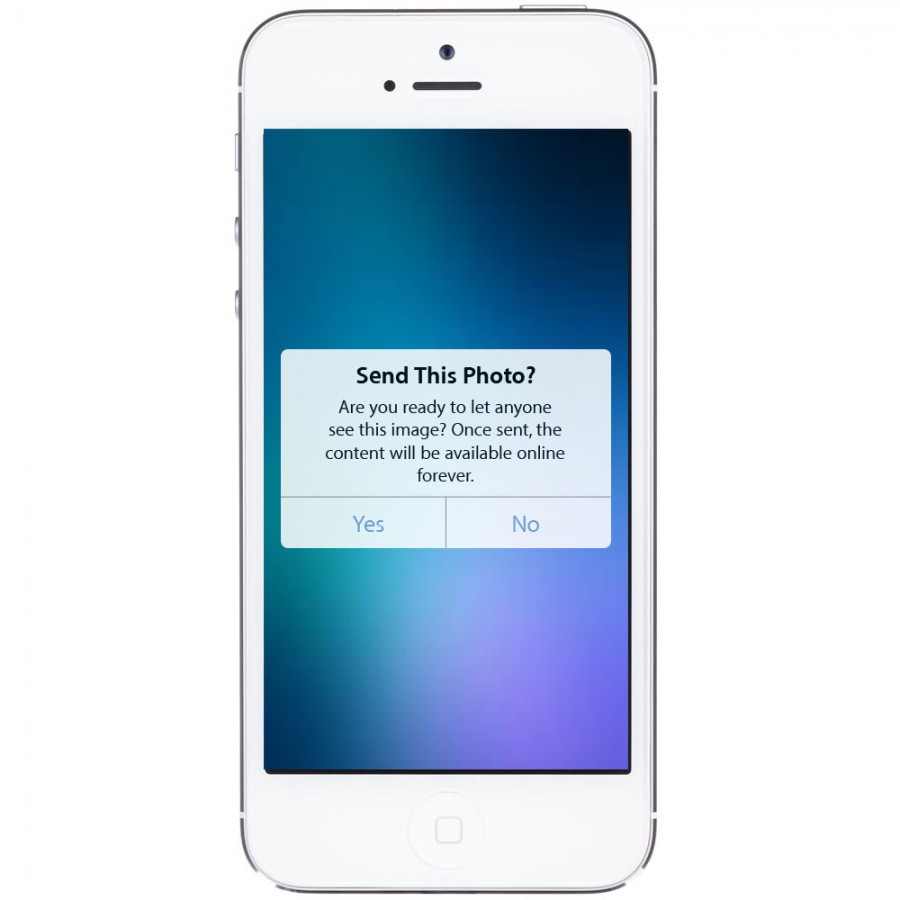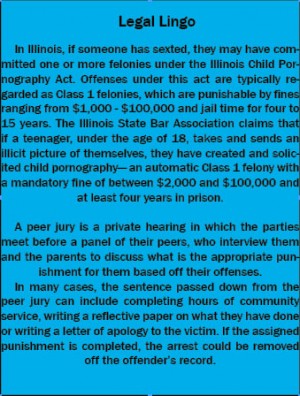Sexting sends a message
Twelve New Trier Township high school students—all males aged 15 to 16—have been ordered to appear before a peer jury and are awaiting consequences following the discovery of sexting, sending a sexually explicit photograph or messages via a smartphone device.
According to an email sent to parents prior to the discovery, the New Trier superintendent Linda Yonke wrote, “New Trier administrators recently discovered that some students have taken, sent, or received inappropriate photos of other students or of themselves and were in possession of those photos during school hours.” The email went on to state that, “in some cases, students were unaware that photos of them had been taken. The school has been conducting a thorough investigation over the last several days and also is working with the Winnetka Police.”
Marc Hornstein, Commander of Police for the Winnetka Police Department, verified the belief that there was criminal activity going on that included harmful material of minors. The intent of the investigation was to determine if those violations occurred and if so, who where the responsible parties and what would be the appropriate means to reprimand them.
As this has not been the first time that New Trier Township high school has had to deal with sexting, the Winnetka Police Department has partnered with other community organizations and the school in the past to conduct seminars on internet safety and social media education.
“I think a big problem is that [some people] take for granted or overlook what ‘WWW’ stands for. ‘WWW’ stands for world wide web. When you put an image out there, it has the potential to go literally anywhere in the world. Even if you take the photo in the privacy of your own home, you have no idea where that photo can end up,” Hornstein said.
New Trier is not alone as other schools in the area struggle to deal with teen sexting. In a case similar to the 12 New Trier students, three Warren Township High School boys were arrested on Nov. 6 due to an ongoing sexting and cyberbullying investigation against a female classmate.
When a video that another student had secretly taken of him and his then-girlfriend began circulating among the students in his Pennsylvania high school, Anders Hemdal, Students Against Sexting (SAS) Founder, found coming to school nearly impossible.
“Walking around [school,] you sort of feel as if you’re naked; you don’t know who has seen you like that,” Hemdal said. “When kids are standing in the hallways and laughing at their phones you can’t help to think ‘Is that me that they’re looking at?’”
Although Hemdal’s grades and social life suffered, one positive thing came about the experience: Students Against
Sexting. In November of 2012, the Hemdal family created SAS to educate teens about the dangers and possible consequences of sexting. Since Hemdal received little support from his friends and teachers, he wanted to create an organization where teenagers can turn their experiences into something positive.
“I didn’t want other teens to go through what I had to go through; with being ostracized. It was humiliating going to school and I didn’t want other students to go through that,” Hemdal said.
Aside from the emotional and social consequences of sexting, there are legal ones as well. Whether one sends an image of oneself or of another person, both are punishable under the law.
“The most important thing to remember is that [sending these images are] criminal offenses,” Hornstein said.
Within the school, there can not be any possession, transmission or sharing of inappropriate pictures or videos. This rule applies to all private or school-issued devices on school property during school hours, according to Ken Latka, Assistant Principal for Operations.
“[The consequences for sending inappropriate material] can vary tremendously. It all depends in the nature by which the picture is being used,” Latka said. “But, inappropriate use of personal and school-issued electronic devices will receive consequences.”
If someone shares inappropriate pictures or videos while they are on campus, they will be reprimanded. However, if an incident that occurs outside of school can connect to the school building, forming a nexus, the student can still be punished for sharing or possessing a photo because it was given to them in the school building during school hours.
In order to educate students about online safety and the risks of sharing harmful, illicit material, Stevenson typically arranges at least one presentation a year on internet safety and sexting. Most recently, all math classes were required to attend a presentation by a member of the Illinois State Attorney’s Office on Oct. 17.
While only one formal presentation on internet safety and sexting may be done in a year, Latka mentions that deans, teachers and even members of the Freshman Mentor Program (FMP) help students understand smart and safe decision making. Even though a class period won’t be spent specifically discussing sexting, talking about responsible decision making and embedding Social Emotional Learning (SEL) into the curriculum allows students to think twice about sharing inappropriate material.
“We typically only find out about situations when someone comes forward. I would be incredibly naive to think that it’s not happening here at Stevenson High School,” Latka said. “I don’t know what is commonly shared by students, but what I can say is when [an incident surrounding sexting] is brought to our attention, we investigate vigorously.”
The school’s investigations can include confiscating and searching student iPads. Latka assures students that while it is not the school’s practice to randomly seize and search devices, however if there is reasonable suspicion something inappropriate has been shared, a thorough and proper investigation will ensue, which could lead to school consequences.
With the rise of smartphones, Facebook and multimedia sharing applications such as Instagram and SnapChat, the ability to send pictures and videos remain available to anyone. The potential to do harm exists as well— a harm that can exist in the cyberworld as soon as one hits ‘send.’
“Once you hit send, whatever you have sent is now out of your control. You have no idea where it could come to haunt you in the future. A job interview, a college interview, who knows,” Hemdal said. “Don’t place yourself in a situation where you don’t know what the consequences will be, place yourself in one that you can control.”



